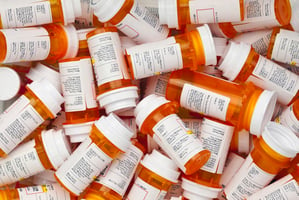Stimulant Dispensing for Young ADHD Patients Remains Below Pre-Pandemic Levels

Stimulant dispensing to U.S. children being treated for attention-deficit/hyperactivity disorder (ADHD) dropped significantly from the start of the COVID-19 pandemic through 2023, with adolescent boys bearing most of the brunt of the drop, according to a study in Pediatrics.
The shortage of immediate-release mixed amphetamine salts (Adderall) that began in fall 2022 was not a significant contributor to the drop because it was largely offset by increased dispensing of other stimulants, according to Sijia He, M.S., from the University of Michigan Medical School, and colleagues.
The findings stand in contrast to prior research that found that the number of new stimulant prescriptions for patients of all ages was well above pre-pandemic levels by the end of March 2022, He and colleagues noted. “The discrepant findings may derive from our inclusion of all stimulant prescriptions, not just incident prescriptions, as well as the fact that trends in stimulant dispensing to adults and children have diverged, with large increases among the former and much smaller changes in the latter,” they wrote.
The researchers analyzed stimulant dispensing data for youth ages 5 to 17 from IQVIA, a database that captures 92% of U.S. prescriptions from retail pharmacies, from 2017 through 2023. Their analysis revealed three main findings:
- The overall stimulant-dispensing rate to youth as of December 2023 was 6.6% lower than pre-pandemic levels in January 2017 because this rate never fully recovered after the large decline that began with the pandemic in March 2020.
- The impact was different by sex and age, with adolescent boys particularly impacted. By December 2023, the monthly stimulant-dispensing rate was close to pre-pandemic levels among boys ages 5 to 11 and 9% higher than predicted among girls. Among adolescents ages 12 to 17, the stimulant-dispensing rate dipped only slightly for girls but fell 19% below the pre-pandemic level for boys.
- There was a 13% decrease in dispensing rates of immediate-release mixed amphetamine salts starting in October 2022, but counterbalancing increases in the dispensing of extended-release mixed amphetamine salts and dexmethylphenidate.
“Decreases in dispensing of stimulants and antidepressants to adolescent boys are unlikely to reflect improved mental health, given evidence that the mental health of adolescent boys worsened during the pandemic,” the researchers wrote. “A more plausible explanation is that adolescent boys were less likely to seek care for mental health symptoms during the pandemic, potentially increasing their risk of adverse events…. This possibility should be urgently explored.”
In an accompanying commentary, Sarah Weas, M.S.N., M.P.H., with Boston Children’s Hospital, and William J. Barbaresi, M.D., with Harvard University, wrote that the analysis didn’t factor in the increasing number of children being diagnosed with ADHD every year, thus underestimating the number of children who are now going without treatment. Furthermore, the findings do not adequately capture the profound impact of the medication shortages on children who have been forced to switch to other stimulant medications and their families, they wrote.
For related information, see the Psychiatric News articles “Months Later, Stimulant Shortage Persists” and “Stimulant Prescriptions Spiked During Pandemic, CDC Finds.”
(Image: Getty Images/iStock/aquaArts studio)
Don't miss out! To learn about newly posted articles in Psychiatric News, please sign up here.





